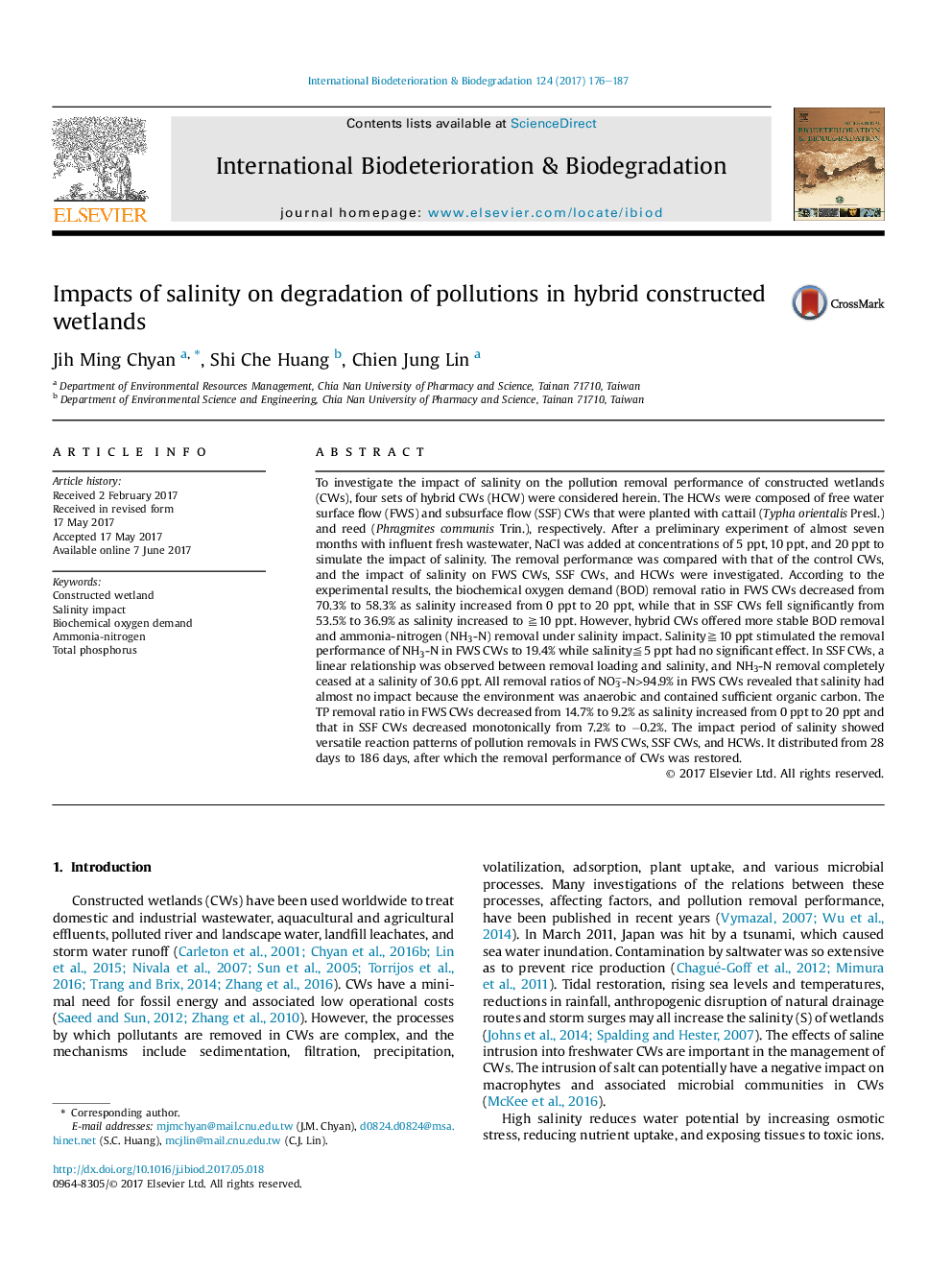| کد مقاله | کد نشریه | سال انتشار | مقاله انگلیسی | نسخه تمام متن |
|---|---|---|---|---|
| 5740334 | 1616293 | 2017 | 12 صفحه PDF | دانلود رایگان |
- Salinity impact showed versatile reaction patterns of pollution removals in FWS, SSF, and HCWs.
- Hybrid CWs offered more stable BOD removal and NH3-N removal under salinity impact.
- Removal loading of NH3-N linearly decreased with salinity increase in SSF CW.
- Sufficient organic carbon suppressed salinity impact on NO3â-N removal in FWS CW.
To investigate the impact of salinity on the pollution removal performance of constructed wetlands (CWs), four sets of hybrid CWs (HCW) were considered herein. The HCWs were composed of free water surface flow (FWS) and subsurface flow (SSF) CWs that were planted with cattail (Typha orientalis Presl.) and reed (Phragmites communis Trin.), respectively. After a preliminary experiment of almost seven months with influent fresh wastewater, NaCl was added at concentrations of 5 ppt, 10 ppt, and 20 ppt to simulate the impact of salinity. The removal performance was compared with that of the control CWs, and the impact of salinity on FWS CWs, SSF CWs, and HCWs were investigated. According to the experimental results, the biochemical oxygen demand (BOD) removal ratio in FWS CWs decreased from 70.3% to 58.3% as salinity increased from 0 ppt to 20 ppt, while that in SSF CWs fell significantly from 53.5% to 36.9% as salinity increased to â§10 ppt. However, hybrid CWs offered more stable BOD removal and ammonia-nitrogen (NH3-N) removal under salinity impact. Salinityâ§10 ppt stimulated the removal performance of NH3-N in FWS CWs to 19.4% while salinityâ¦5 ppt had no significant effect. In SSF CWs, a linear relationship was observed between removal loading and salinity, and NH3-N removal completely ceased at a salinity of 30.6 ppt. All removal ratios of NO3â-N>94.9% in FWS CWs revealed that salinity had almost no impact because the environment was anaerobic and contained sufficient organic carbon. The TP removal ratio in FWS CWs decreased from 14.7% to 9.2% as salinity increased from 0 ppt to 20 ppt and that in SSF CWs decreased monotonically from 7.2% to â0.2%. The impact period of salinity showed versatile reaction patterns of pollution removals in FWS CWs, SSF CWs, and HCWs. It distributed from 28 days to 186 days, after which the removal performance of CWs was restored.
Journal: International Biodeterioration & Biodegradation - Volume 124, October 2017, Pages 176-187
